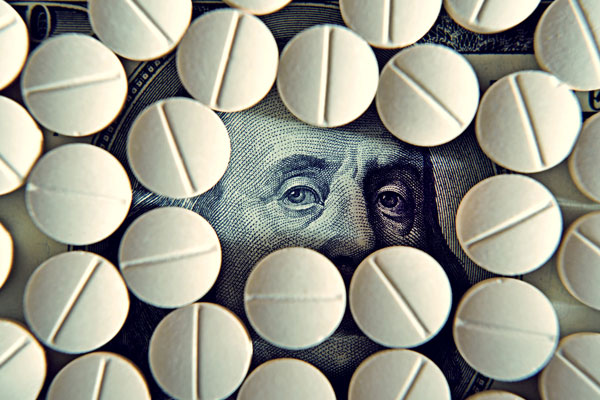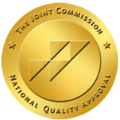HELP US BETTER MEET YOUR NEEDS BY TELLING US A LITTLE MORE ABOUT YOURSELF
Opiod – Oxycontin Detox
Opioids Overall
Opioids are a class of drugs that are chemically related and interact with opioid receptors on nerve cells in the body and brain. Opioid pain relieving medications are generally safer when taken for a short time and as prescribed by a doctor but they are frequently misused because, in addition to pain relief, they produce euphoria.
To be more specific, opioids overall include opiates. The term Opiates is an older one that refers to such drugs derived from alkaloid compounds naturally found in opium, such as:
- Morphine
- Codeine
- Thebaine
Technically the term opiate should be differentiated from the broader term opioid. Other opioids are semi-synthetic, which includes drugs like:
- Heroin
- Hydromorphone (brand name Dilaudid)
- Oxycodone (brand name OxyContin)
- Oxymorphone
- Hydrocodone (brand name Vicodin)
Then there are synthetic opioids, such as:
- Fentanyl
- Buprenorphine
- Methadone
- Tramadol (brand name Ultram)
However, regardless of if they are natural, semi-synthetic or completely synthetic; all opioids are considered drugs of high abuse potential. Thus, these drugs are listed on various “Substance-Control Schedules” under the Uniform Controlled Substances Act of the United States.


Opioid Addiction
Opioid addiction has become a major issue facing Americans today. With a mounting death toll these drugs have done a great deal of damage to many communities, and opioid addiction is a potent illness. Opiate drugs change the way the brain responds to pain stimuli, but it also disrupts the reward and pleasure centers in the brain, which produces a feeling of euphoria or “high” effect. The central nervous system (CNS) has opioid receptors that receive opiate drugs. The CNS includes:
- Brain
- Cardiovascular system
- Respiratory systems
Opioids also cause a variety of physical and emotional effects. So while those euphoric or pleasant feelings occur, opioids lower important things in the body like:
- Heart rate
- Respiration
- Blood pressure
- Body temperature
All this can be very dangerous. Extended use of opioids can change the brain chemistry and lead to both physical and psychological dependence on the drug. This includes both medical and illicit forms of opioids.
Prescription Opioid Abuse
Misuse of prescription opioids is when these drugs are taken in a way that is different than prescribed, taken in greater quantities than intended, or taken without a doctor’s prescription.
Prescription opioids can dangerous even when taken as prescribed by a doctor, because they still have the capacity to create dependence on the drug. In fact, prescription drug abuse is believed to be a primary contributor to the growing heroin epidemic. Once people become addicted to the effects of these narcotic medications many will resort to street drugs for reasons such as they cannot get a prescription, or they cannot afford the medication.

The National Institute of Drug Abuse (NIDA) publishes that between 26.4 million and 36 million people around the globe abuse opiate drugs, which includes prescription pain relievers and the illegal drug heroin.

One study published very recently by the Center for Disease Control and Prevention (CDC), estimates 1 in 5 patients prescribed to a 10 day supply of opioids will become dependent.

91% of patients who survive an opioid overdose are prescribed more.
Those given a 30-day supply had a 45% chance of staying on opioids after a year.
Those given a 30-day supply combined (after multiple refills) had a 30% chance of being on opioids for a year and a 20% chance of being on them for three years.
OxyContin
OxyContin is a strong prescription painkiller derived from oxycodone. The Food and Drug Administration (FDA) recently specified that strong painkillers like OxyContin should only be used for severe, chronic pain from conditions like arthritis and cancer. While this medication can be extremely helpful to some suffering from very serious illnesses, it also comes with a great deal of risk, and controversy.
In recent years public health officials have said that more than half of long-term OxyContin users are prescribed dangerously high doses. Then, over the last 20 years the federal governments National Survey on Drug Use and Health suggests over 7 million Americans have abused OxyContin.
In 2015 Doctors wrote 5.4 million prescriptions for OxyContin
The 12 Hour OxyContin Controversy
OxyContin is specifically formulated to release pain medication into the body for up to 12 hours. Or at least, that was the big selling point.
When Purdue Pharmaceuticals inducted OxyContin into their catalog over two decades ago, their marketing strategy for this new drug was centered around the claim that one dose would relieve pain for 12 hours. This would make it a medication lasting twice as long as generic painkillers, however several investigations have found that this is actually not consistently the case.
In fact, an investigation into the company’s confidential records revealed Purdue was aware of the issue through clinical trials that showed many patients did not experience relief for 12 hours, and for many the drug stopped working hours before hand.
The thing the company did that made it worse – instead of retracting their claims, they simply told doctors to prescribe stronger doses. Controversies surrounding OxyContin were compounded when criminal and civil charges were filed throughout the last decade by the U.S. Department of Justice over allegations of misleading the government, physicians and consumers while marketing the drug. The case was around claims such as:
- OxyContin being “rarely addictive”
- Naming benefits that lacked sufficient scientific proof
- Concealing serious health risks of the drug
OxyContin is definitely one of the notable elements of the prescription opioid problem.

Opioid Overdose Information
Statistics
The CDC has reported that in 2015:
Overdose deaths associated with prescription and illicit opioids increased to 33,091

Synthetic opioids such as Fentanyl killed 9,580
Prescription drugs like OxyContin killed 17,536

CDC now estimates 91 people die every day in America from an opioid overdose
While overdose is possible with Opioids on their own, a combination of alcohol, sedatives or other medications will dramatically increase the risk of overdose.
Symptoms of Opioid Overdose
While in combination with other substances some symptoms may vary.
Opioid Overdose Symptoms
- Delirium
- Confusion
- Nausea
- Vomiting
- Mood swings
- Extreme constipation
- Pinpoint pupils
- Cold, clammy or bluish skin around lips and fingernails
- Stopped breathing
- Extreme fatigue
- Inability to wake up
- Depressed or slowed breathing
- Lack of oxygen to the brain
- Death
Depressed breathing is probably the most dangerous symptom of an opioid overdose. Not only can lack of oxygen to the brain cause damage to the brain, but it can also cause other organs like the heart or kidneys to shut down.
But overdose can also happen in cases where an individual prescribed to opioids can develop a tolerance to the drug, believing they need to continually increase their dosage, and accidentally take too much for the body to handle. So someone does not need to be a recreational user or suffer with addiction to experience an overdose.
Never leave a person experiencing an opioid overdose alone. An overdose on opioids, illegal or not, can rapidly get worse and become more lethal. Even if someone is conscious, there is the possibility they could do something that puts them or others in danger. It is crucial that you contact emergency medical assistance immediately.

Early Opioid Withdrawal Symptoms
- Muscle aches
- Restlessness
- Anxiety
- Tearing up
- Agitation
- Excessive sweating
- Running nose
- Sleeping problems
- Racing heart
- Hypertension
- Fever
All withdrawals are the body’s reaction to the substance leaving your brain. Once a body has adapted to a chemical to help regulate functions, it suffers trying to function with the chemical suddenly removed.
Late Opioid Withdrawal Symptoms
- Nausea
- Vomiting
- Diarrhea
- Abdominal cramping
- Goosebumps
- Blurry vision
- Depression
- Drug cravings
- Rapid heartbeat
- High blood pressure
These symptoms can range from moderately unpleasant to painful. There can also be other serious complications from withdrawal.
- Aspiration pneumonia
Breathing vomited material into lungs can lead to developing pneumonia
- Dehydration
Loss of fluids and electrolytes from diarrhea or vomiting can cause abnormal heart beats, which can cause circulatory problems or even heart attack.
Opioid Withdrawal Symptoms
Depending on the compound or combination of substances, along with the severity of use and the length of time the drug was used, opioid withdrawal symptoms may vary in intensity. Short-acting opioids usually cause withdrawals between 6 to 12 hours after the last dose. Long-acting opioids usually start within 30 hours of the last dose.

NEED HELP IMMEDIATELY
Call
1-888-934-7256

Opioid Medical Detox
Because of the dangers presented by opioid abuse to the body and the brain, and because of the often difficult and uncomfortable withdrawals, detoxing from opioids is best done in a safe medical environment. Some detox facilities will offer a more comprehensive model for recovery from opioid addiction. Medical detox consists of both psychological treatment from professionals for both addiction and co-occurring mental health issues, as well as pharmacological treatment from medical specialists who can decide if there are optional medications to help ease the detox process. Also, with a medical detox for opioids the staff will monitor important vital signs like:
- Respiration levels
- Blood pressure
- Body temperature
- Heart rate
Someone should not suddenly stop taking opioids without help, and with a medical detox the individual has a secure and supportive environment. Beyond detox, designing a recovery plan and developing relapse prevention should be included in treatment moving forward.

Palm Healthcare Company
1177 George Bush Blvd.
Delray Beach, FL 33483
888-934-7256
Joint Commission accreditation and certification is recognized nationwide as a symbol of quality that reflects an organization’s commitment to meeting certain performance standards.



